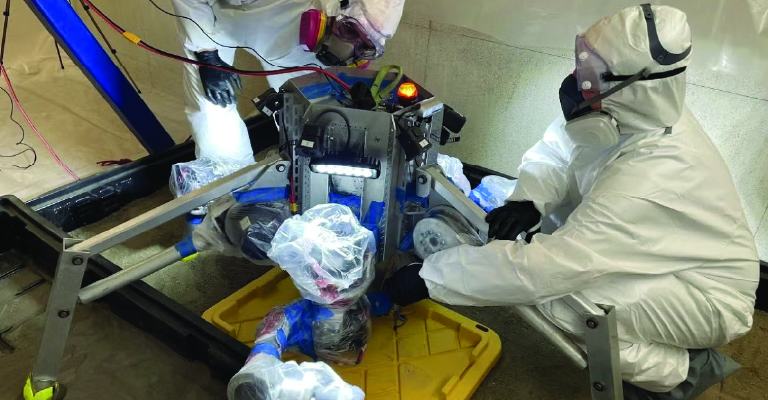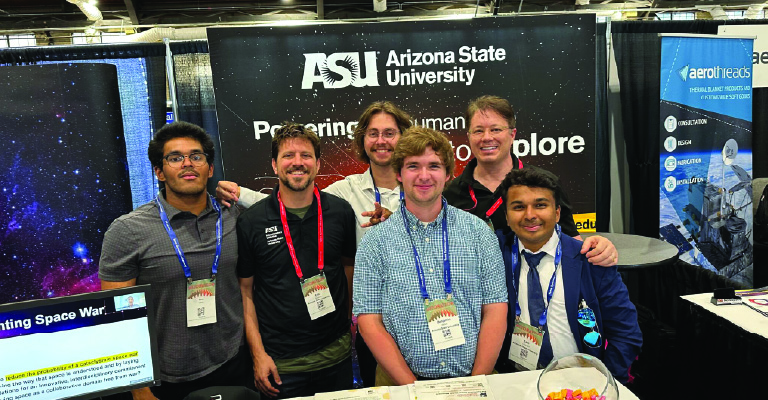About
How can we enhance our ability to explore and collect data in inaccessible or extreme terrain?
Meet CHARLOTTE (Crater Hydrogen and Regolith Laboratory for Observation on Technical Terrain Environments), the six-legged lunar rover designed to overcome the limitations of traditional wheeled rovers. Developed by the Luminosity Lab in collaboration with the Interplanetary Laboratory, CHARLOTTE is engineered to tackle the challenges of lunar exploration head on.
Key features
- Six-legged design: Enables navigation of steep slopes and uneven terrain.
- Tethered operation: Connects to a lander for power and data transmission.
- Mastcam-Z integration: Equipped with advanced imaging capabilities.
Technical advantages
CHARLOTTE’s unique design allows it to access critical lunar regions, including permanently shadowed regions of craters. Its ability to traverse rocky terrains and steep inclines provides essential data for future lunar missions.
Testing and development
The rover underwent rigorous testing in simulated lunar environments:
- Custom-built 64-square-foot lunar sandbox for traction testing.
- Thermal cycling in a custom cold and heating chamber.
- Tether durability tests using simulated lunar regolith.
Status
Past
Category
Technology development demonstration | Research and science
Environment
Moon and Mars
Contact
Key accomplishments
- Conducted comprehensive testing, including vibration, thermal, vacuum and lunar dust assessments.
- Developed a sandbox filled with lunar regolith simulant to evaluate the rover’s performance in a simulated lunar environment.
Publications
News

Lunar Rover project to be featured at NASA forum
ASU Luminosity Lab collaborated with Interplanetary Laboratory to build a lunar rover for NASA’s BIG Idea Challenge.

Interplanetary Lab’s insights from Small Satellite Conference 2024
Members of the Interplanetary Lab and colleagues from ASU NewSpace share their experiences exhibiting at the conference.

In some of the interviews I was in, I brought up that I was part of this project and how I went about taking what the customer wanted and performing it. It showed that I could adapt and be cost-effective and timely, which is what employers are looking for.
Team
Anjelica Salinas
Explore more projects
Learn about our research programs dedicated to creating a future in space that prioritizes people and environments. Collaborate with experts and students to explore groundbreaking ideas and solutions that drive positive change.